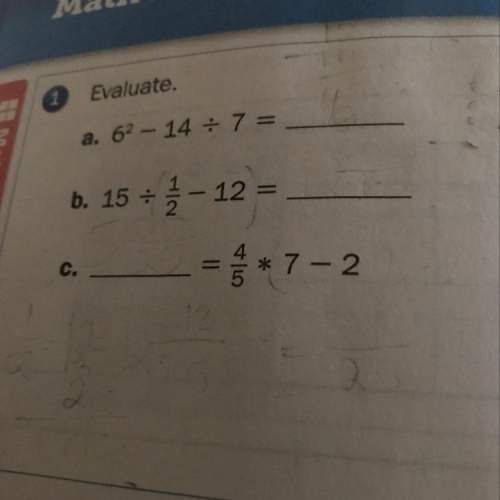
Mathematics, 13.09.2021 07:20 Niaax7803
For the following statements, enter T if they are true and F if they are false. Logarithms and
exponentials can be defined for complex numbers, and then can assume complex function values, but
in the questions below concerning domain and range, let's consider only real numbers.
The natural exponential is the reciprocal of the natural logarithm.
The natural exponential is the inverse of the natural logarithm.
The natural exponential is the negative of the natural logarithm.
The domain of the natural logarithm is the set of all positive numbers.
The domain of the natural logarithm is the set of all real numbers.
The domain of the natural exponential is the set of all positive numbers.
The domain of the natural exponential is the set of all real numbers.

Answers: 3
Another question on Mathematics

Mathematics, 21.06.2019 17:50
Find the cosine function that is represented in the graph.
Answers: 1


Mathematics, 22.06.2019 00:00
Urgent! 20 points! here is a you are the new manager at trusty goods wholesale produce. you need to figure out how to adjust the amount of produce in your notes after the events of the day: you got 5 more crates of bananas someone returned 2 crates of apples a worker dropped a crate of grapes (oh no! , you had to throw them out) you sold a crate of bananas you sold 5 crates of apples can you write an expression to describe your day using: "a" for crates of apples "b" for crates of bananas and "g" for crates of grapes? make sure the expression is in simplest form question 2 (3 points) explain your steps using sentences.
Answers: 1

Mathematics, 22.06.2019 04:10
The probability that a u.s. resident has traveled to canada is 0.18 and to mexico is 0.09. a. if traveling to canada and traveling to mexico are independent events, what is the probability that a randomly-selected person has traveled to both? (page 109 in the book may ) b. it turns out that only 4% of u.s. residents have traveled to both countries. comparing this with your answer to part a, are the events independent? explain why or why not. (page 119 may ) c. using the %’s given, make a venn diagram to display this information. (don’t use your answer to part a.) d. using the conditional probability formula (page 114 in the book) and the %’s given, find the probability that a randomly-selected person has traveled to canada, if we know they have traveled to mexico.
Answers: 3
You know the right answer?
For the following statements, enter T if they are true and F if they are false. Logarithms and
exp...
Questions

Chemistry, 22.01.2022 14:00

Mathematics, 22.01.2022 14:00


Mathematics, 22.01.2022 14:00

Engineering, 22.01.2022 14:00

Mathematics, 22.01.2022 14:00

Computers and Technology, 22.01.2022 14:00

Mathematics, 22.01.2022 14:00

Biology, 22.01.2022 14:00


English, 22.01.2022 14:00

Mathematics, 22.01.2022 14:00

Mathematics, 22.01.2022 14:00

Social Studies, 22.01.2022 14:00

Mathematics, 22.01.2022 14:00



Mathematics, 22.01.2022 14:00





